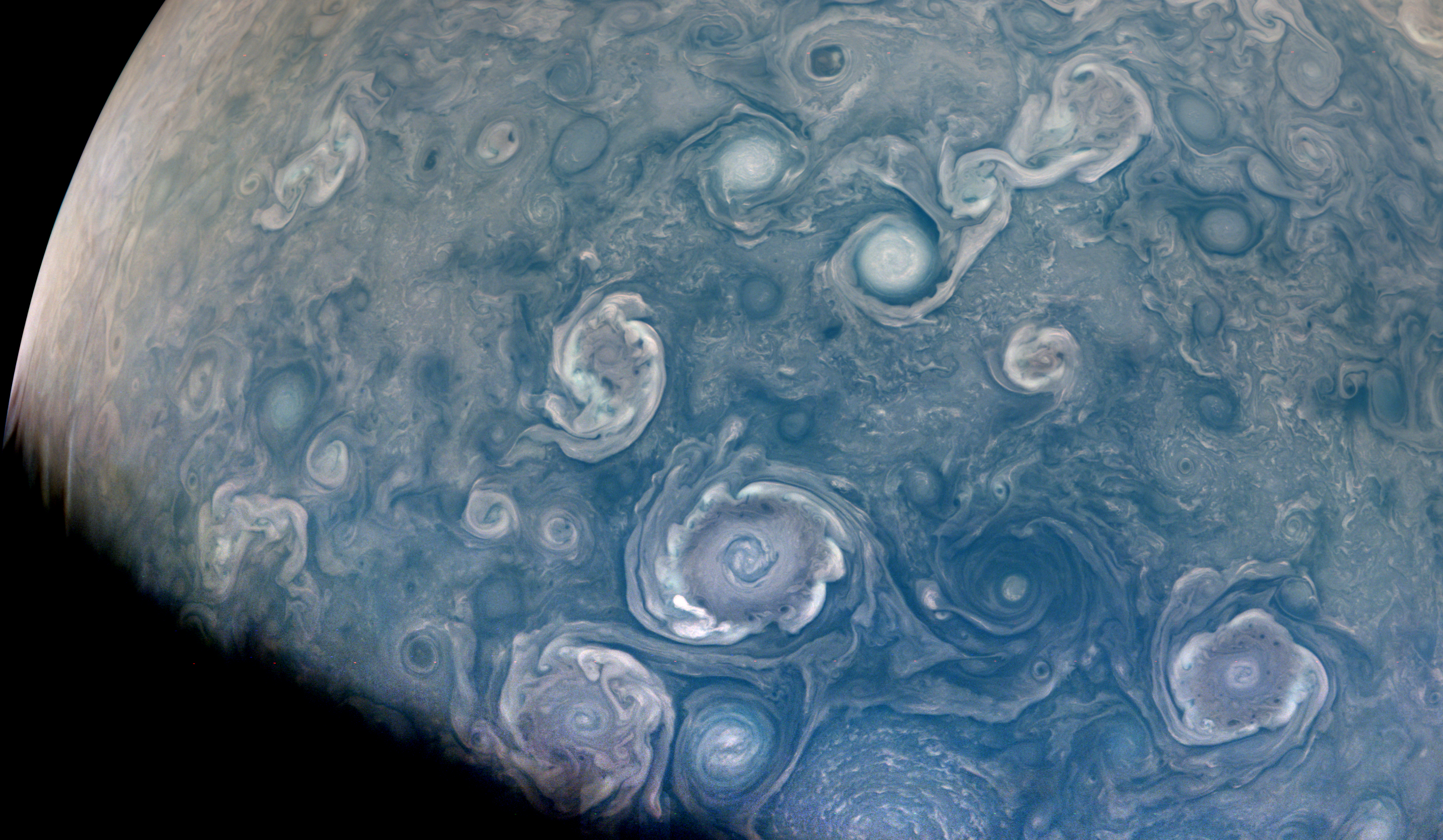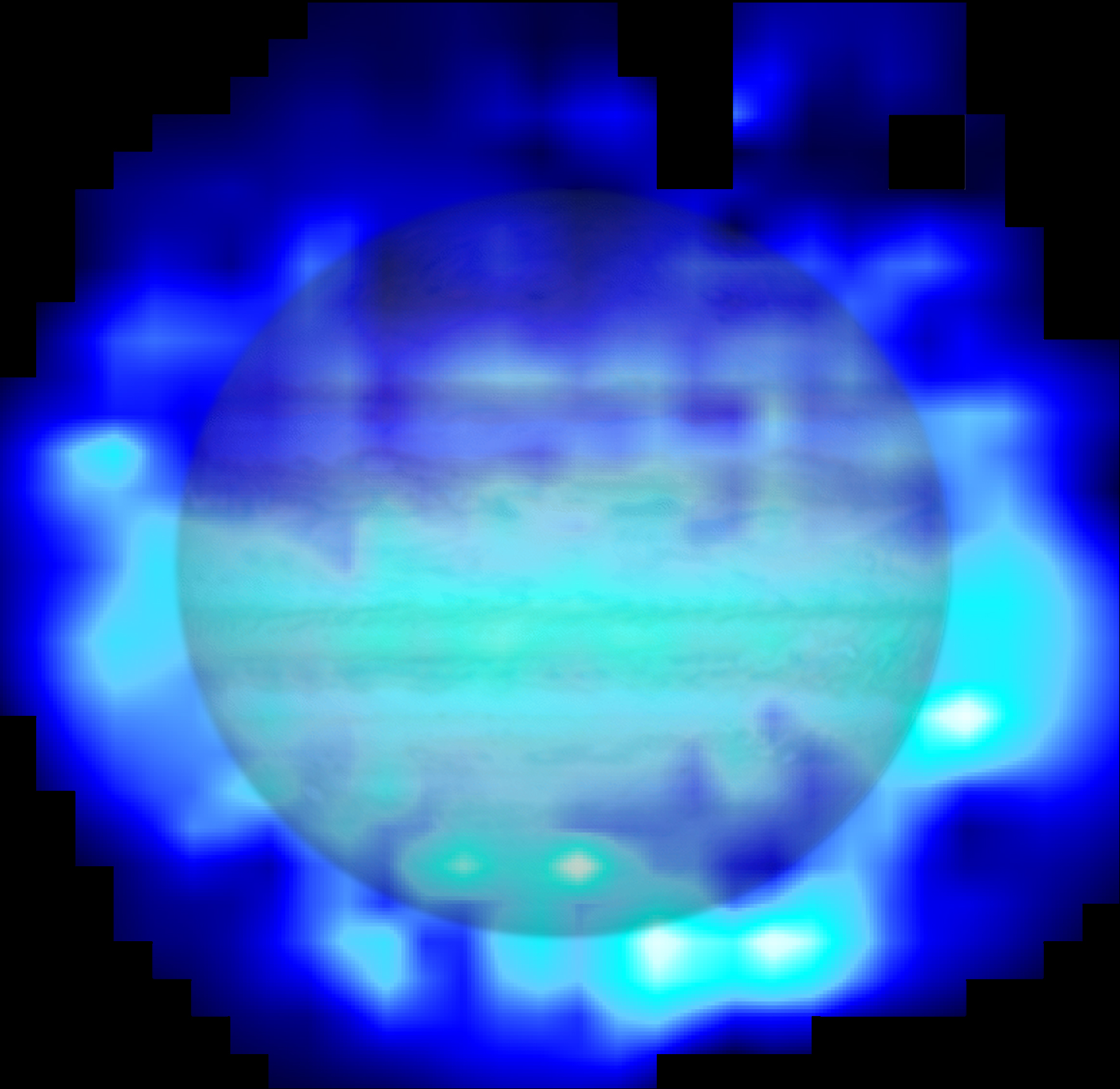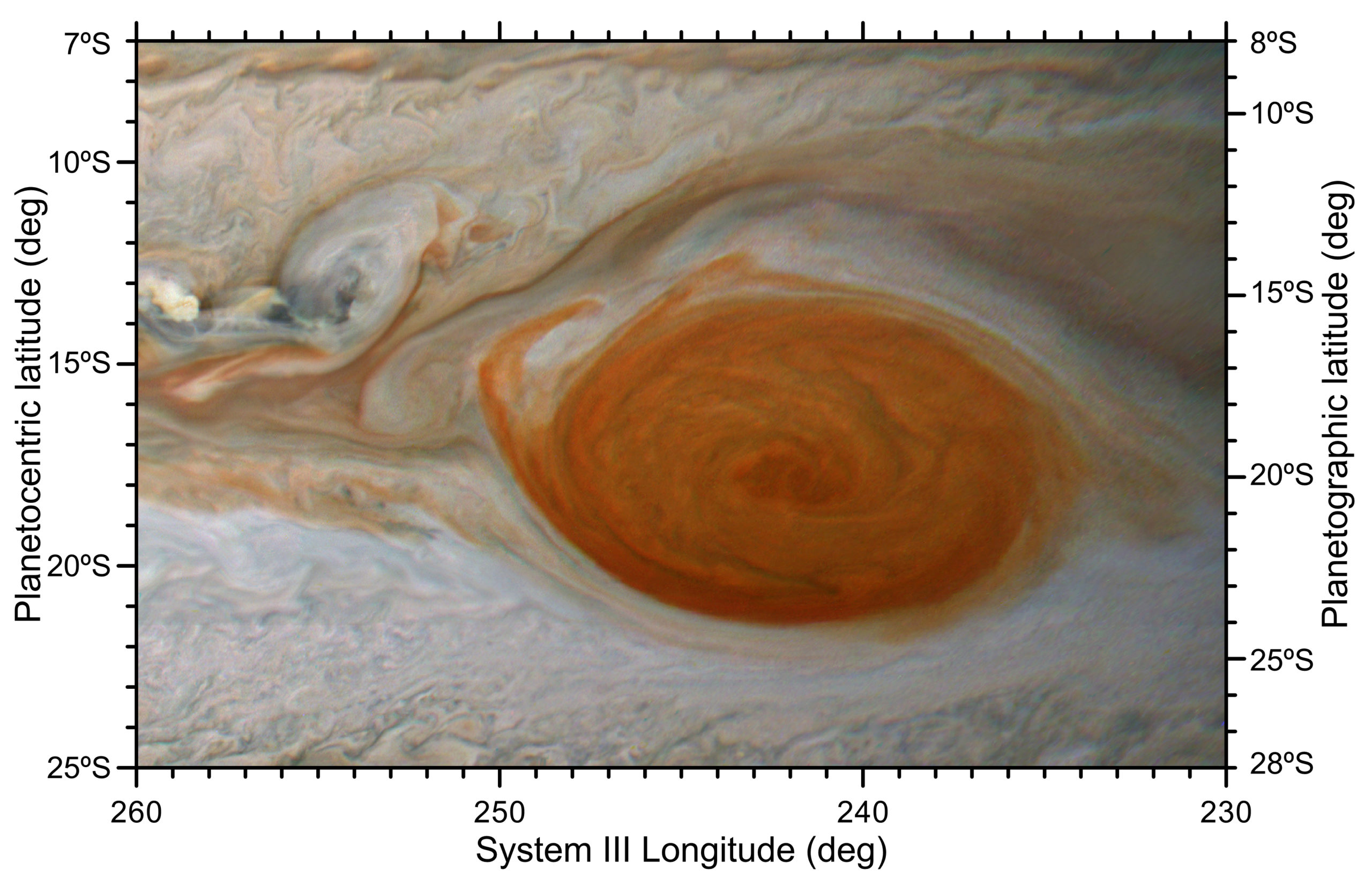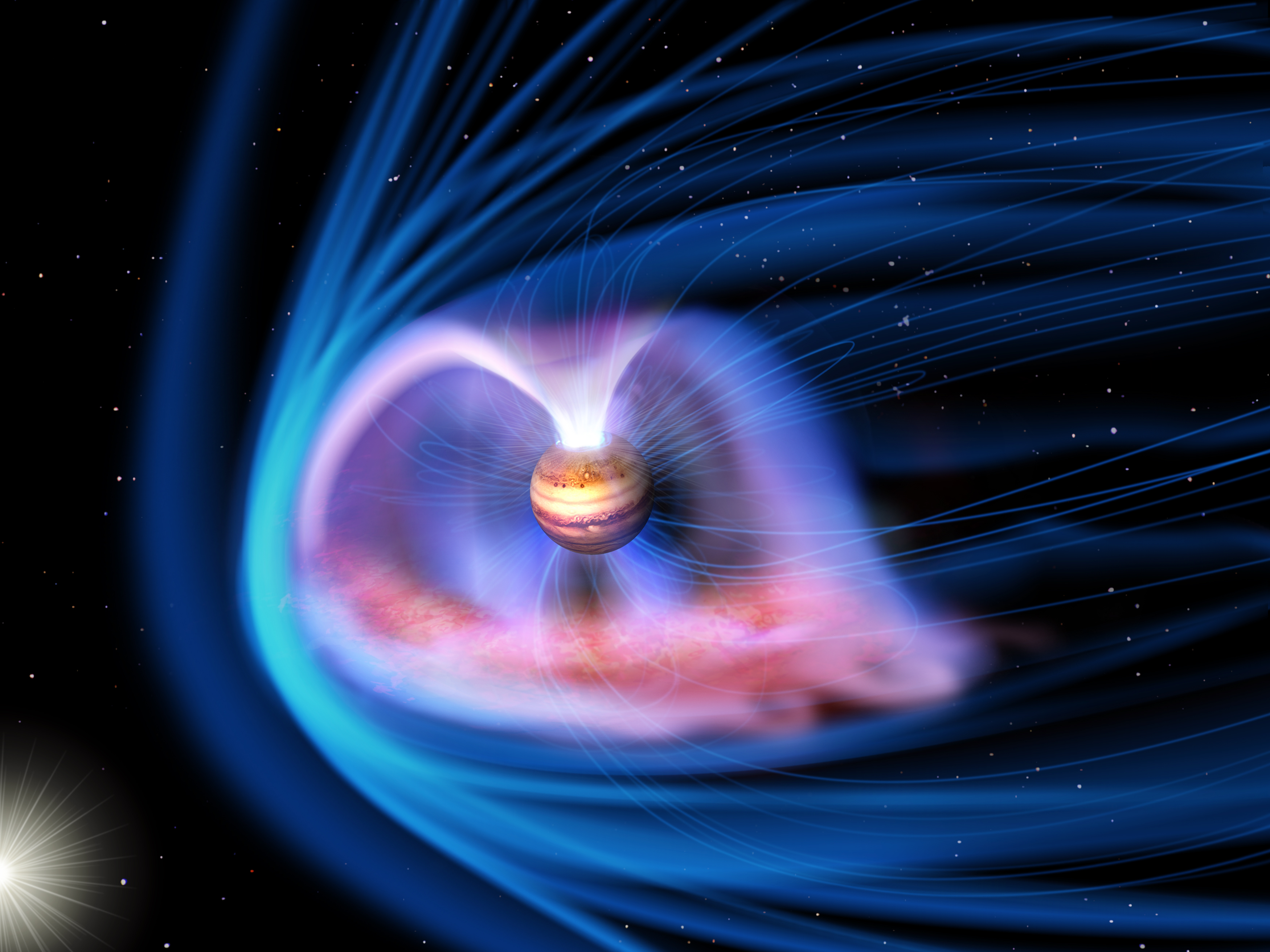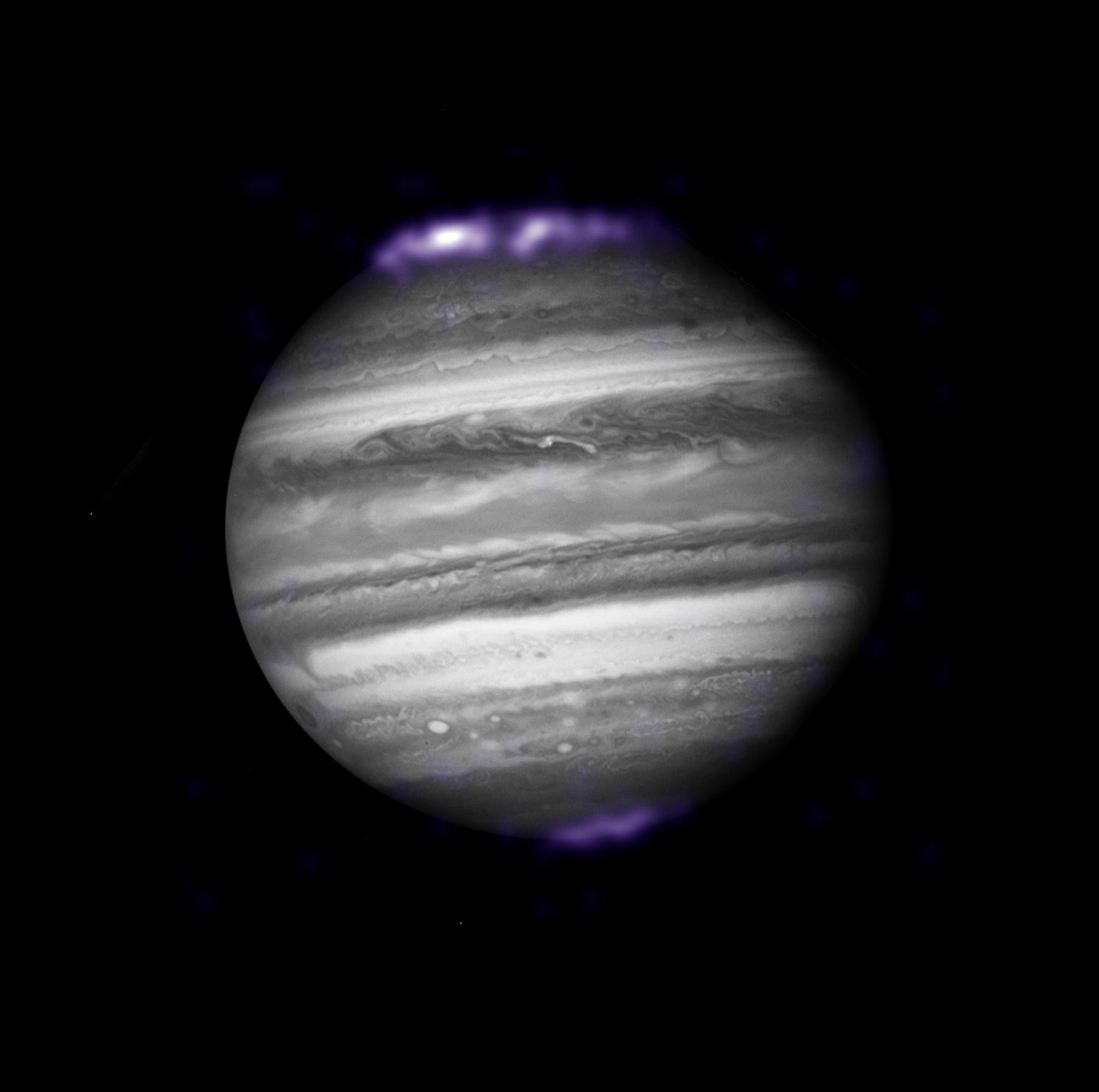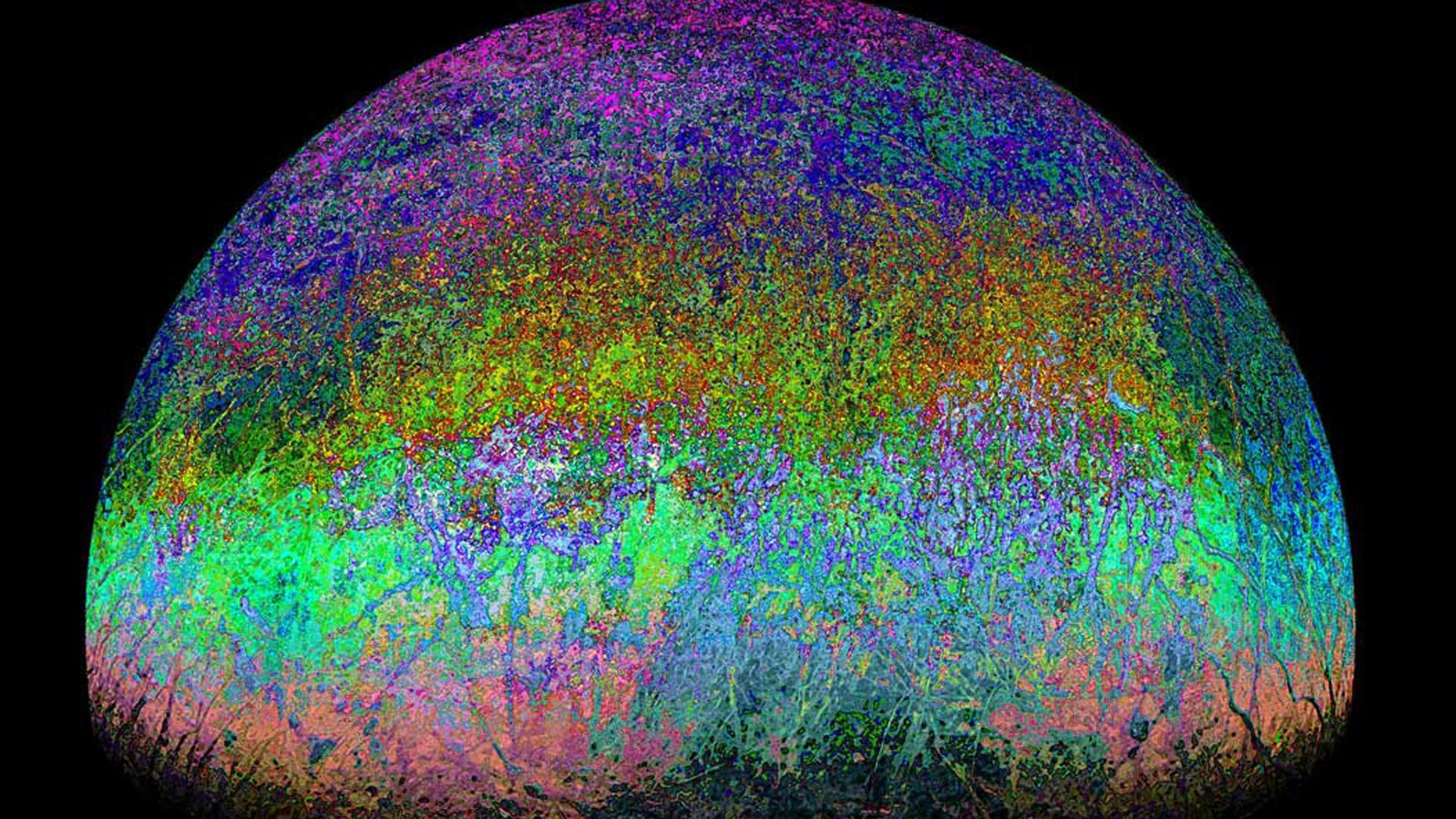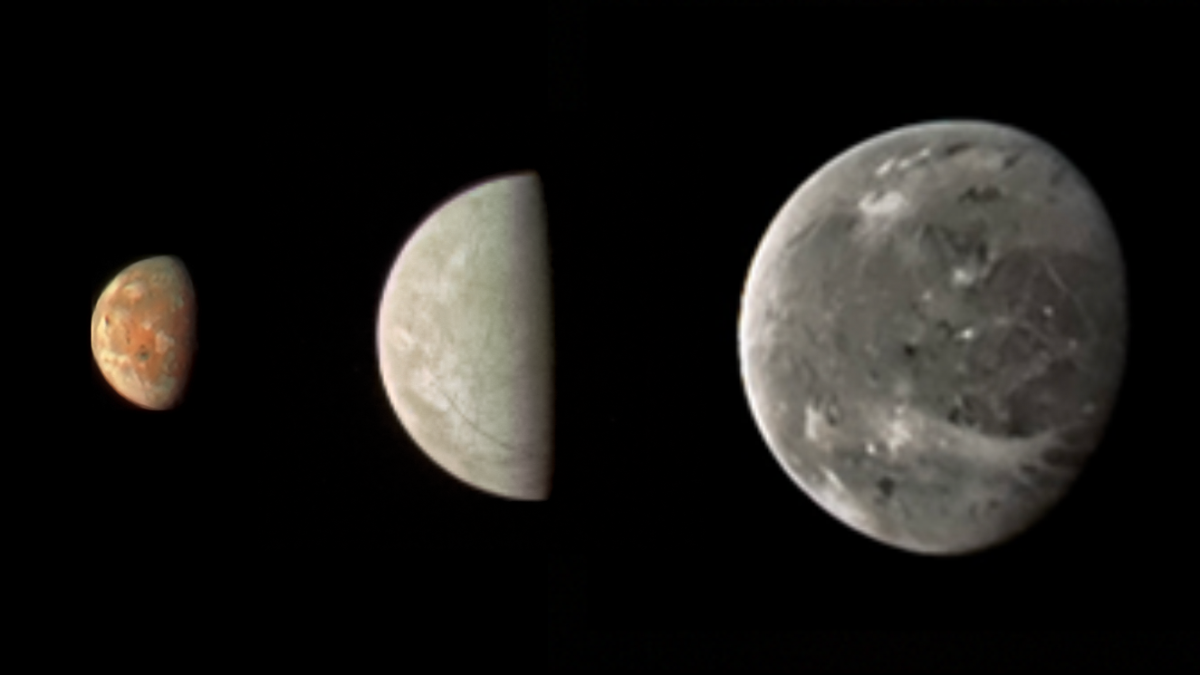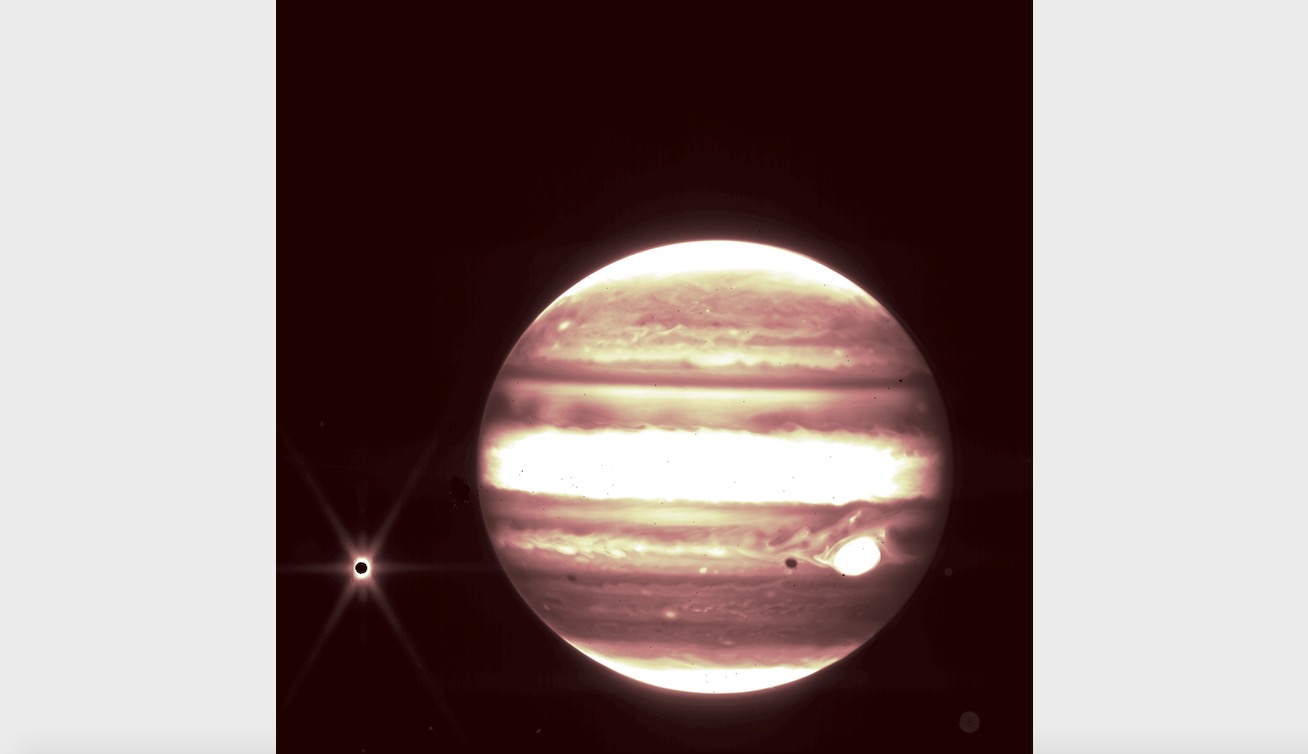Jupiter's 10 most massive mysteries
The solar system's most massive planet, Jupiter, has many secrets to reveal.

All hail the king of planets and its many mysteries.
Jupiter is the most massive planet in our solar system and it's easy enough to spot with the naked eye. While big telescopes can get a good look at the gas giant planet, bringing a spacecraft within reach provides a close-up view.
Numerous spacecraft orbited or flew by Jupiter in the past five decades. The first were Pioneer 10 and Pioneer 11 in 1972 and 1973, respectively, followed by twin flybys by Voyager 1 and Voyager 2 in 1977. Other prominent missions include the Galileo spacecraft (orbiting between 1995 and 2003) and most recently, NASA's Juno (2011-2022).
Based on a past interview with Juno principal investigator Scott Bolton and information from the European Space Agency (ESA), here are 10 mysteries we have about Jupiter that may be solved with more study. Luckily, two more missions will head out that way very soon: NASA's Europa Clipper that launches no earlier than 2024, and ESA's Jupiter Icy Moons Explorer (JUICE) scheduled to lift off in 2023 or so.
In Photos: Juno's amazing views of Jupiter
How did Jupiter get enriched in heavy elements, compared with the sun?
Jupiter is 317 times more massive than the Earth, making it a real heavyweight in the solar system. It is believed that the planets in the solar system formed from the same hydrogen-helium cloud from which the sun was created. But here's the catch: The Galileo probe, which looked at Jupiter in the 1990s and 2000s, found a different abundance of heavy elements in Jupiter than in the sun.
One theory (proposed at the time by Galileo scientists) is that Jupiter's heavy elements come from the numerous comets, asteroids and other small bodies that it has pulled in and "consumed" when they get too close. But scientists aren't quite sure. Alternatively, a newer study based on Juno data suggests Jupiter may have formed four times farther away from the sun than the gas giant's orbit, which may explain the strange abundance.
Breaking space news, the latest updates on rocket launches, skywatching events and more!
Related: This jaw-dropping Jupiter photo is a photographer's sharpest ever and made of 600,000 images
2. What is the global abundance of water in Jupiter?
Water is key to understanding how Jupiter was formed. Water ice hitchhiking on early comets or asteroids brought heavier elements to Jupiter besides the original hydrogen and helium floating around in the solar system, according to the Southwest Research Institute
A surprising recent finding is just how persistent water can be after a comet crashes into Jupiter. A famous comet called Shoemaker-Levy 9 broke up into pieces before peppering the planet in July 1994. About 20 years later, the Herschel Space Observatory detected an abundance of water in Jupiter's stratosphere that came from Shoemaker-Levy 9 (which was clear because most of the water vapor was around the impact sites).
At least one Juno study found a surprising amount of water in Jupiter compared to what models suggested. Water may make up about 0.25% of the atmospheric molecules over Jupiter's equator, much higher than previous measurements from Galileo. Figuring out why the two spacecraft have different estimates is key to better determine the recipe for planet formation, NASA officials said at the time.
In photos: 10 extraordinary ocean worlds in our solar system
3. What is the nature of Jupiter's core?
The physics of Jupiter are hard for even space scientists to imagine. Jupiter is made up of 90 percent hydrogen, which exists in the outer layers as gas (just like on Earth). Deeper inside the planet, however, the hydrogen is under so much pressure that the electrons are squeezed out, creating a fluid that conducts electricity like a metal, according to a 2011 NASA feature story.
This process creates a huge magnetic field within the planet, which is also strengthened by Jupiter's rapid rotation. Auroras shine brighter on Jupiter than anywhere else in the solar system. At the core of Jupiter, however, the composition is anyone's guess. No one is sure how far the liquid hydrogen layer penetrates and if the core has heavier elements inside.
Juno aims to figure out more about Jupiter's insides by examining the planet's atmosphere, gravity and magnetic field. Its work suggests that Jupiter may have a "fuzzy" core, "much larger than anyone had anticipated," Bolden said in a 2018 press conference.
Related: What is Jupiter made of?
4. How deep do the zones, belts and storm features, such as the Red Spot, go?
Images of Jupiter show thick stripes and swirling storms, but most of these pictures capture only the tops of the clouds that cover the giant planet. It's unclear what the weather is like deeper down, inside Jupiter, and whether the features that can be seen on the surface are present below. Juno observations suggest that is indeed the case, and that the bands, storms and other surface weather we can see may persist for thousands of miles (or kilometers) into the massive gas giant planet, and is going deeper than what the spacecraft is capable of seeing.
Understanding the long-term weather on Jupiter will also help scientists solve mysteries such as why its Great Red Spot is shrinking. This storm feature has been known to astronomers ever since telescopes were first available in the early 1600s. Once estimated as large enough to fit three Earths across its width, the storm is now no bigger than Earth's diameter.
In photos: The Great Red Spot: The solar system's biggest storm
5. How does the interior of Jupiter rotate?
When you look at the exterior of Jupiter, you can see that the zones and bands don't move in concert with each other. There are changes in their rotation and sizes from night to night, changes that are even apparent in amateur telescopes.
Deeper down in Jupiter's atmosphere, what is happening is even less understood. To date, planetary probes have mostly been looking at the surface of the giant planet. Juno's work suggests that the interior may in fact move as a "nearly rigid body", according to NASA, which is opposite to how one would expect gases to behave.
Figuring out the transition between the surface, fluid weather into this zone will be a task for Juno in its final years, as the interior of Jupiter may be indicative of the structure at Saturn and other gas giants.
Related: Jupiter's atmosphere, composition and the Great Red Spot
6. How and where does the magnetic field originate?
The magnetic fields found around planets like Earth are thought to be caused by the flow of liquids within the core (in the case of Earth, the fluid is iron). Things are more complicated on Jupiter, however.
The planet has liquid hydrogen closer to its center that would also conduct, much like a metal, but findings from Juno suggest the interior has a vast asymmetry between the northern and southern hemispheres; why is open to interpretation. Meanwhile, alternating currents of magnetism deep within Jupiter may be driving forceful auroras visible high in the atmosphere.
Figuring out what is happening in Jupiter could not only help us understand magnetism in giant planets in our own solar system, but could also help scientists make predictions about planets outside the solar system. Jupiter is considered a model for exoplanet studies, although there are very weird Jupiter-size planets out there. For example, some orbit very close to their parent stars.
Related: Behold this fantastic 3D animation of Jupiter's frosting-like clouds
7. What drives the aurora in Jupiter?
Jupiter's auroras were first spotted when the Voyager 1 spacecraft flew by in 1979. When astronomers later turned X-ray telescopes toward the planet, however, they saw much more power than anticipated. Auroras are so frequent on Jupiter, in fact, that in a 2007 news release astronomers said they see the auroras every time they look at the giant planet.
The process for generating these fields, however, is poorly understood, NASA added in the same release. Scientists know that Jupiter has enough spin to produce its own auroras (unlike the Earth, which relies fully on solar activity). They also know the auroras come from charged particles, mainly (in Jupiter's case) from volcanic plumes on the moon Io. But it's unclear how the particles make their way from Io to Jupiter's magnetosphere.
Closer study will be required by the Juno spacecraft, but great progress has already been made: X-ray flares using Io's particles in the atmosphere are generated by vibrations in Jupiter's magnetic field lines, which release plasma that in turn release energy in the form of X-rays.
Related: Auroras, lightning and gings of Jupiter amaze in surprising NASA Juno photos
8. Could there be life in Jupiter's system?
While Jupiter is likely too hostile for life as we know it, its moons might be a different matter. The gas giant is surrounded by numerous icy moons, the largest and most famous being Europa, Ganymede and Callisto. It may be that these worlds, which likely host oceans, include the building blocks of life within them.
JUICE will target several of these moons in its orbits, while Europa Clipper will largely (but not exclusively) examine Europa. The hope is these spacecraft will study the moons' potential for life, along with their "hidden oceans, magnetism, heating processes, tidal effects, orbits, surface activity, cores and compositions, atmospheres and space environments," ESA states.
Related: Contact with ET: How would humanity react?
9. How has Jupiter’s complex environment shaped its moons, and vice versa?
Juno continues to boggle the mind with the findings about Jupiter's gravity, interior and atmosphere. As you can see from the findings already presented, the spacecraft often contradicted past results or took science in a completely separate direction. Armed with this information, we can now turn to the moons to get a greater sense of how Jupiter's strangeness changes and shapes the moons it hosts.
Some of the mysteries requiring more examination here include better understanding how high-energy particles flow around moons like Io, the nature of the moons' auroras, and how the magnetic field of Jupiter (which extends around its moons) is shaped by the solar wind in different zones around the planet, among many others outlined by ESA.
The moons also shape each other, through orbital resonances and stirring up tides on each other, which adds further complexity to an already otherworldly system.
Related: Jupiter's weird magnetic field gets even weirder
10. How do gas giants usually form and evolve?
While each planet is unique, what we are finding on Jupiter may be representative of other planets inside and outside of our solar system, especially bigger ones. Scientists are currently cataloging a range of incredible worlds, many of which are a few times larger than Jupiter and which have a new tool to look at them: the James Webb Space Telescope.
Webb has sharp infrared imaging available and one of its larger goals is to catalog planetary atmospheres to better understand what they are made of, and how they may change over time. The studies closer up at Jupiter help to inform what scientists are seeing further out, to improve their models of how planets form, evolve and continue changing in different kinds of planetary systems.
Related: 10 amazing exoplanet discoveries
References
European Space Agency. (2022, March 23.) Exploring the secrets of Jupiter: Top five mysteries JUICE will solve. https://www.esa.int/Science_Exploration/Space_Science/Juice/Exploring_the_secrets_of_Jupiter_Top_five_mysteries_Juice_will_solve
Moore, Kimberly M. et. al. (2018, Sept. 5). A complex dynamo inferred from the hemispheric dichotomy of Jupiter's magnetic field. Nature 561, no. 76-78. https://www.nature.com/articles/s41586-018-0468-5
Mura, A. et. al. (2021, July 3). "Oscillations and stability of Jupiter polar cyclones. Geophysical Research Letters 48, no. 14. https://agupubs.onlinelibrary.wiley.com/doi/full/10.1029/2021GL094235
NASA. (2011, Aug. 9). A freaky fluid inside Jupiter? https://science.nasa.gov/science-news/science-at-nasa/2011/09aug_juno3/
NASA. (2018, March 7.) NASA Juno findings: Jupiter's jet-streams are unearthly. https://www.nasa.gov/feature/jpl/nasa-juno-findings-jupiter-s-jet-streams-are-unearthly
NASA. (2020, Feb. 20). "Findings from NASA's Juno update Jupiter water mystery." https://www.nasa.gov/feature/jpl/findings-from-nasas-juno-update-jupiter-water-mystery
Southwest Research Institute. (2022.) Mission Juno. https://www.missionjuno.swri.edu
Yao, Zhonghua et. al. (2021, July 9.) "Revealing the source of Jupiter’s x-ray auroral flares." Science Advances 7, no. 28. https://www.science.org/doi/10.1126/sciadv.abf0851
Elizabeth Howell is the co-author of "Why Am I Taller?" (ECW Press, 2022; with Canadian astronaut Dave Williams), a book about space medicine. Follow her on Twitter @howellspace. Follow us on Twitter @Spacedotcom or Facebook.

Elizabeth Howell (she/her), Ph.D., was a staff writer in the spaceflight channel between 2022 and 2024 specializing in Canadian space news. She was contributing writer for Space.com for 10 years from 2012 to 2024. Elizabeth's reporting includes multiple exclusives with the White House, leading world coverage about a lost-and-found space tomato on the International Space Station, witnessing five human spaceflight launches on two continents, flying parabolic, working inside a spacesuit, and participating in a simulated Mars mission. Her latest book, "Why Am I Taller?" (ECW Press, 2022) is co-written with astronaut Dave Williams.
